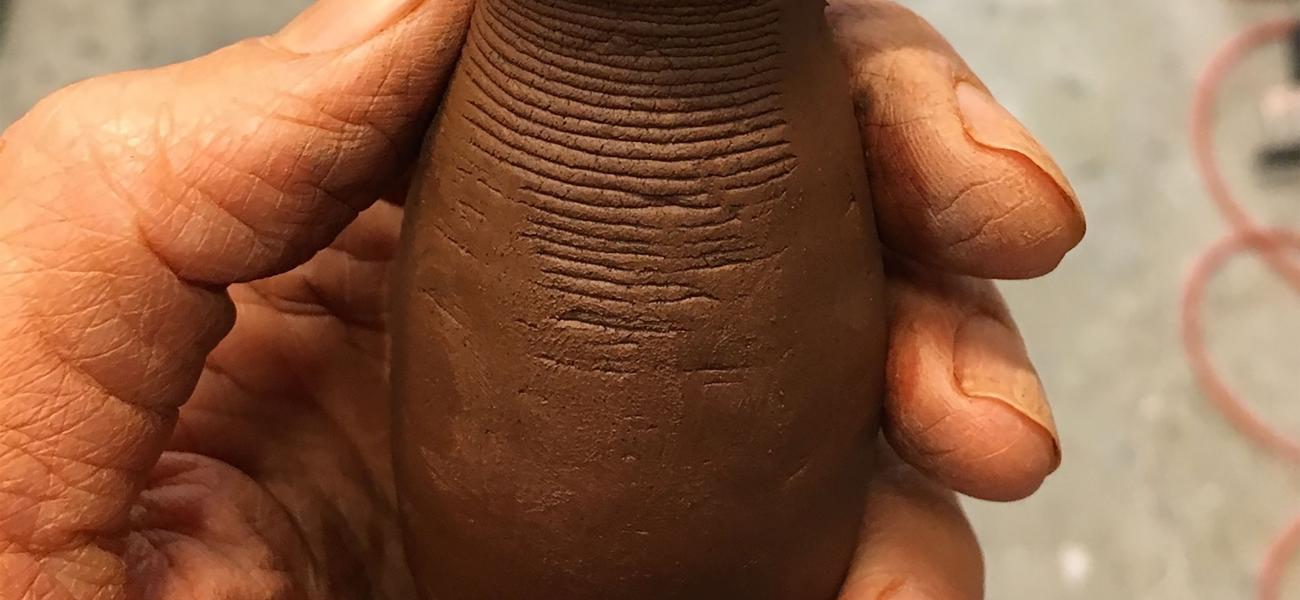There are moments when working with clay that seem to hover before thought. This is an experience of an intelligence that is rooted in the body. It is found in the detailed material information that is transferred from clay to the fingertips when first touching a pot’s surface the morning after a throwing session, or gauging the moisture in a plaster mold before casting. This subtle information can be maddeningly hard to quantify and requires metaphor to describe. We see this in the use of terms, such as leather-hard, or bone-dry, to explain the different stages of drying clay. More can be conveyed to a student by handing them an example of clay in its various stages than through explanation. They begin to feel these nuances in their fingertips, and build their particular expertise from such body-based knowledge.
Some of this information can be quantified and put into language. For instance, someone firing a kiln might rely on a thermocouple or oxygen probe to measure the conditions of their firing atmosphere. But often we rely on subtle cues, such as the particular shade of orange inside a kiln or the pernicious green flame when firing in reduction. The education of a ceramic artist consists of a gradual accretion of these embodied memories, accumulated through direct relationship with the clay.
There is a direct, unmediated intelligence inside materials, too. Their wisdom stems from their characteristics. The process that created clay, the accumulated millennia, the path from mountainside to valley to river to floodplain—each stage contributed its nature to aid earth on its path to becoming clay. Each of these characteristics is embedded in the clay: the slope and velocity of the river, the material makeup of the mountainside. These contribute to the clay’s wisdom, its particular level of plasticity or the stages of vitrification it can achieve in the fire.
The material may in fact be active in shaping our encounters with it. David Abram is a cognitive theorist examining perception and the formation of language. In his book The Spell of the Sensuous, he describes the moment of touch as a reciprocal exchange between active agents. He says: “There is an intimate reciprocity to the senses; as we touch the bark of a tree, we feel the tree touching us.”[1] As the clay touches us, it conforms itself to our shape; it accepts some part of the moisture of our hands; it tells us something of its nature and what it might allow us to do.


